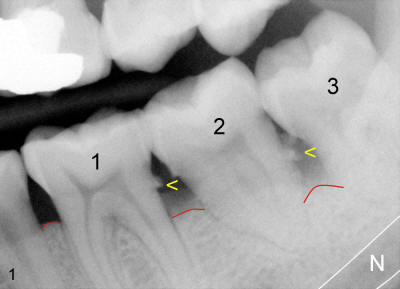
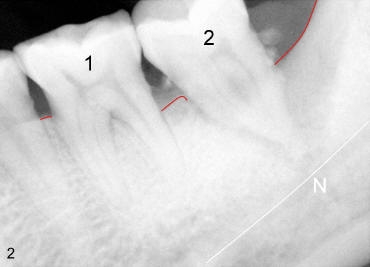
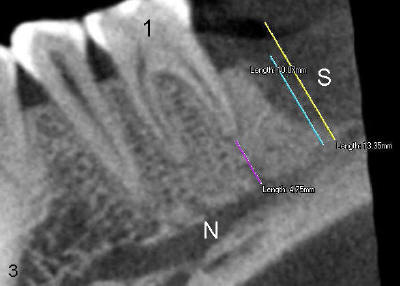
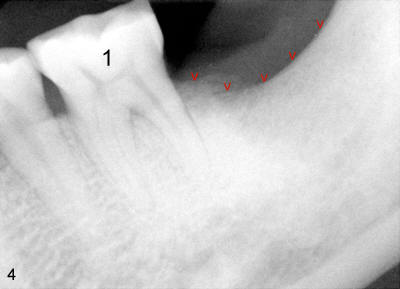
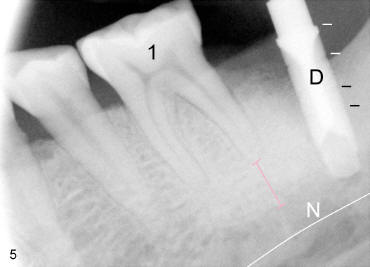
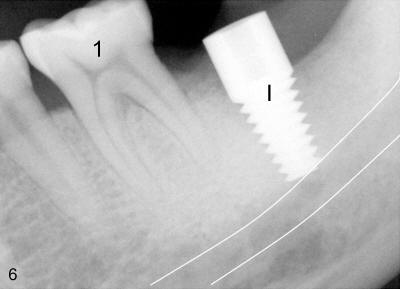
 |
 |
 |
 |
 |
 |
Dental Education Lecture: Bone Height and Implant
For an implant to be successful, bone should be sufficient, both in width and height. Bone volume is determined by several factors, genetics, and pre-existing condition before extraction. For example, gum disease can reduce bone volume.
Mr. Gao has severe gum disease, featured by abundant tartars (yellow arrowheads in Fig.1). Bone height (red lines) is reduced progressively in the back teeth (from 1st to 3rd molars). The biggest nerve inside our jaw (N) is not far from the root tips of the 2nd and 3rd molars. The 3rd molar is extracted and deep cleaning is done to control gum disease. But Mr. Gao is not so diligent in oral hygiene. Three years later, gum disease is more severe around the 2nd molar with accumulation of tons of tartars and more bone loss (red lines in Fig.2). The tooth cannot to be saved. In addition, the bottom line of the nerve is not quite clear, as compared to that in Fig.1.
As mentioned before, routine dental X-ray does not show the nerve precisely. Two months after extraction of the 2nd molar, oral CT is taken (Fig.3). It allows the doctor to do various measurements from the nerve (N) to the gum line (yellow line), to the top of bone (blue) and to the root tip of the neighboring tooth (purple). At that time, the socket (S) is healing. Fig.4 shows that bone height appears to be reduced further (arrowheads).
To place implant in a safe way, several precaution measures should be taken. After creating an implant bed, a drill (D) is left there and X-ray is taken (Fig.5). Although the top boundary of the nerve is not clear, the doctor realized the tip of the drill is awfully close to the nerve according to the distance between the root tip of the neighboring tooth (1) and the tip of the drill (pink line, compared with that in Fig.3) and marks on the drill (4 lines). In fact the implant is pretty close to the nerve (I in Fig.6). Although there is not any sign of nerve injury, everyone worries about it.
Without gum disease, Mr. Gao would not lose the 2nd molar, and even if he loses it, the bone height would not be so low. The surgery may be much safer.
If bone height proves to be short, it is prudent to use a short implant to prevent potential nerve injury.
Xin Wei, DDS, PhD, MS 1st edition 03/26/2011, last revision 03/27/2011